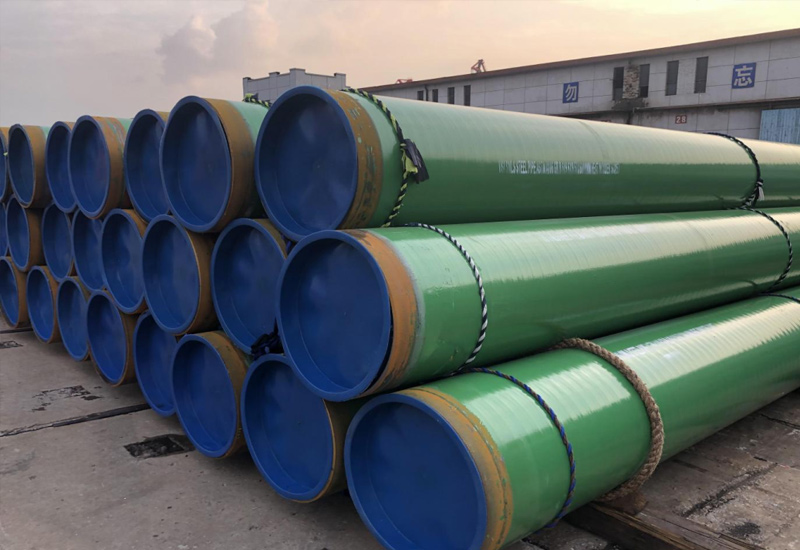HOT BLOG TAGS
ASTM A500
The Comprehensive Guide to ASTM A500: Standard for Structural Steel Tubing
1. Definition and Scope of ASTM A500
ASTM A500 This specification covers cold formed welded and seamless carbon steel round, square, rectangular, or special 21 shapes for welded, riveted, or bolted 22 construction of bridges and buildings, and for general structural purposes. It covers the manufacture ofg tubes from the steel grades listed in T.1and the sizes and shapes that can beproduced.Pipe for general structural purposes,see thereference to ASTM A 500 steeltubing. 1.2 This specification covers (1) sizes in thicknesses not more than 3 in. (75 mm), (2) hot- or cold-rolled, and (3) welded or seamless, and (4) round, square, rectangular, or special shapes. The standard includes hol section welded tubes and cold reduced welded tubes and also shares the same concept of highest possible weight to strength ratio using superior cold formability.
Key Scope Parameters:
Forms: Circular, square, rectangular, and special shapes.
Limitations on Size: Maximum of 88 inches (2,235 mm) perimeter and a wall thickness of ≤1 inch (25.4 mm).
Exceptions: Tubing for dynamic loading applications where a low-temperature tubular segment toughness is required (e.g., seismic or cryogenic service).
2. Product Applications
ASTM A500-compliant tubing is widely used in load-bearing structures due to its optimized strength and formability:
Construction: Building frames, columns, and trusses (B and C grades preferred for higher yield strength).
Infrastructure: Bridges, highway signage, and guardrails.
Industrial: Conveyor systems, storage racks, and machinery frames (Grade D for heavy loads).
Energy: Wind turbine towers and oil/gas support structures.
3. Dimensions and Tolerances
The standard enforces strict tolerances to ensure structural integrity and interoperability:
| Parameter | Tolerance |
| Round Tubes (OD) | ±0.5% (≤1.9 inches); ±0.75% (>1.9 inches) |
| Wall Thickness | ±10% |
| Square/Rectangular Tubes | ±0.5% (width/height) |
| Length | ±5 mm |
| Straightness | ≤0.1% of total length |
Note: Tolerances apply to all grades (A, B, C, D).
4. Chemical Composition by Grade
Chemical requirements vary by grade to balance strength, weldability, and ductility:
| Element (%) | Grade A | Grade B | Grade C | Grade D |
| Carbon (max) | 0.26 | 0.26 | 0.23 | 0.27 |
| Manganese (max) | 1.35 | 1.35 | 0.90–1.35 | 1.35 |
| Phosphorus (max) | 0.035 | 0.035 | 0.035 | 0.035 |
| Sulfur (max) | 0.035 | 0.035 | 0.035 | 0.035 |
| Copper (min) | Not required | 0.18 | Not required | Not required |
Note: Grade B requires copper for enhanced corrosion resistance.
5. Mechanical Properties
Grades are stratified by strength, enabling engineers to match materials to load requirements:
| Property | Grade A | Grade B | Grade C | Grade D |
| Tensile Strength (min) | 310 MPa | 400 MPa | 427 MPa | 448 MPa |
| Yield Strength (min) | 228 MPa | 290 MPa | 317 MPa | 345 MPa |
| Elongation (min) | 25% | 23% | 21% | 20% |
| Elastic Modulus | 200 GPa | 200 GPa | 200 GPa | 200 GPa |
Note: Grade D requires heat treatment for stress relief.
6. Testing Requirements
A stringent check of quality is applied to A500:
Tensile Test (ASTM A370): Proof/yield/tensile strength and elongation.
Flattening Test: welded tubes; tests weld integrity by flattening samples to ⅔ of original height without cracking.
Bend Test: For rectangular tubes; checks for ductility by bending through 180° over a mandrel.
Impact Test (Optional): Only when specified for low temperature applications.
Dimensional Verification: Validates the OD, wall thickness and straightness per Section 3 requirements.
Tubes are permanently marked with both the grade of material and ASTM A500.
7. Comparison with Other Standards
ASTM A500 excels in structural applications but differs from fluid-transport standards:
ASTM A53 (Fluid Conveyance):A500 has 30% higher yield strength but lacks corrosion resistance specs.
ASTM A106 (High-Temp Service): A106 supports elevated temperatures;
A500 prioritizes static load capacity.
Stainless Steels: Austenitic grades (e.g., 304) offer better corrosion resistance but lower yield strength (≈205 MPa).
8. Selection and Implementation Guidelines
Choosing the right grade involves three key considerations:
Load Requirements:
Use Grade A for light loads (e.g., signage).
Opt for Grade C/D for heavy structures (e.g., bridge trusses).
Fabrication Needs:
Grades A/B offer better weldability for on-site modifications.
Grade D requires post-weld heat treatment.
Cost Optimization:
Upgrading from A to B reduces material volume by 20%, lowering overall costs.
9.Updates and Current Status (ASTM A500/A500M-23)
Crucial Edits There are a number of key updates in the 2023 revision:
Minimum Wall Thickness Cap: Raised to 1 inch (25.4 mm) from 0.875 inches (22 mm).
Charpy V Impact Test : Commonly not included except in individual purchase orders.
Variations in Dimension: Rectangular tube sizes up to 7″ X 12″.
Metric Parity: All specifications are now equally valid in SI or imperial units.
10. Conclusion
US Steel Tubing > ASTM A500 Throughout the year, International Steel’s team will be keeping you up to date with the latest developments and industry movements regarding steel and the status of the ASTM A500 steel tubing standard, domestically and worldwide. A 2023 update cements it as a modern icon of construction and industrial design. Engineers however must optimise their grade of choice based on ‘mechanical demands’ and ‘fabrication’ limitations to benefit fully from its potential. For specialized project compliance you should always refer to the official ASTM A500/A500M-23 specification.
Related Products
Share:
HOT TAGS
latest posts
- 3LPP coated pipe: anti-corrosion guard in high temperature and high pressure environment
- ASTM A53 LSAW Steel Pipe Selection Guide for Oil and Gas Transportation Pipelines
- API 5L LSAW Pipe: A Deep Dive into PSL1 vs. PSL2
- Steel Pipe Sizing Errors? DN vs. OD Explained for Buyers
- NDT for Pipe Welds: X-ray vs. Ultrasonic Testing









